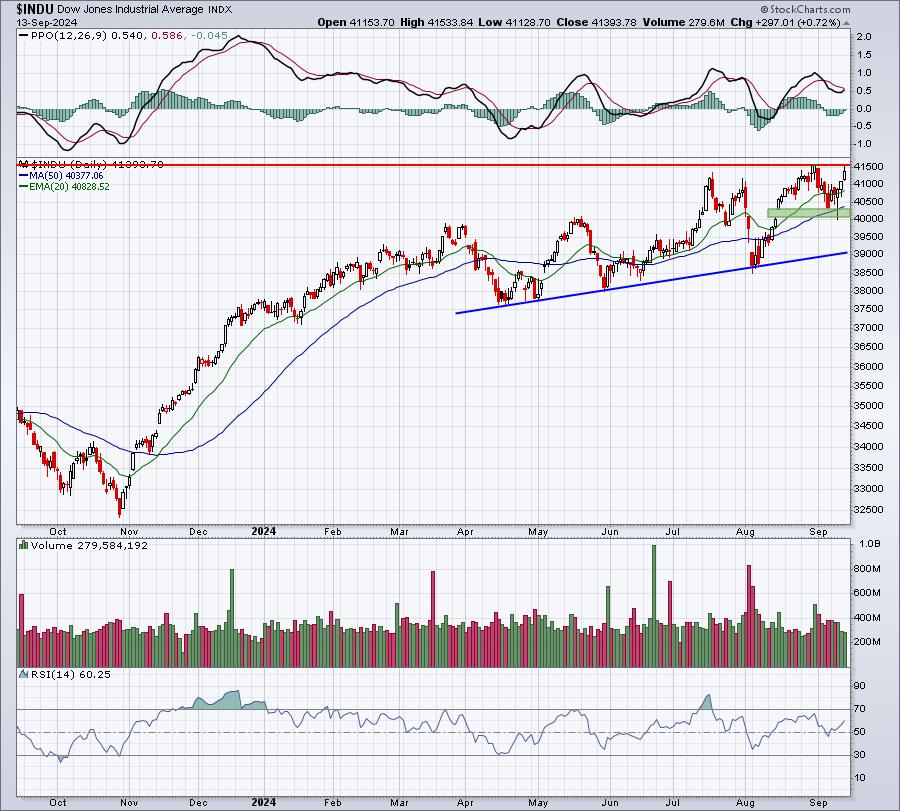That’s a great question, because we saw some very nice gains and we’re now approaching all-time highs, especially on the Dow Jones ($INDU) and S&P 500 ($SPX). The more growth-oriented NASDAQ 100 ($NDX) has much more work to do. How much more strength is required to generate those breakouts? Well, let’s go to the charts:
Dow Jones:
S&P 500:

NASDAQ 100:

The Dow Jones and S&P 500 are clearly the better relative performers as they’re both within 1% of all-time highs that were recently recorded. The NASDAQ 100? Not so much. Not only is the NDX well off its all-time closing high, I can see a clear short-term downtrend line that needs to be broken before we can even consider a move to test all-time highs.
The RSIs on the Dow, SPX, and NDX are currently 60, 58, and 55, respectively. 60 tends to be resistance in short-term downtrends. So we’re at very key technical levels in terms of both price and technical indicators. But it’s not just these challenges that must be overcome. There are major seasonal hurdles directly in front of us as we get set to receive our first interest rate cut in what Fed Chief Powell said was a changing Fed policy (from hawkish to dovish).
The major seasonal challenges were discussed in my Weekly Market Recap on YouTube this weekend. Market “hurricane season” is active in the second half of September. To see just how bad the market has performed during this upcoming period, check out my latest video, “Major Challenge Ahead For S&P 500 In Late September.” Please help us build our YouTube community by hitting that “Like” button and “Subscribe” to our channel to get our latest YouTube videos timely.
Happy trading!
Tom

Tom Bowley is the Chief Market Strategist of EarningsBeats.com, a company providing a research and educational platform for both investment professionals and individual investors. Tom writes a comprehensive Daily Market Report (DMR), providing guidance to EB.com members every day that the stock market is open. Tom has contributed technical expertise here at StockCharts.com since 2006 and has a fundamental background in public accounting as well, blending a unique skill set to approach the U.S. stock market.





